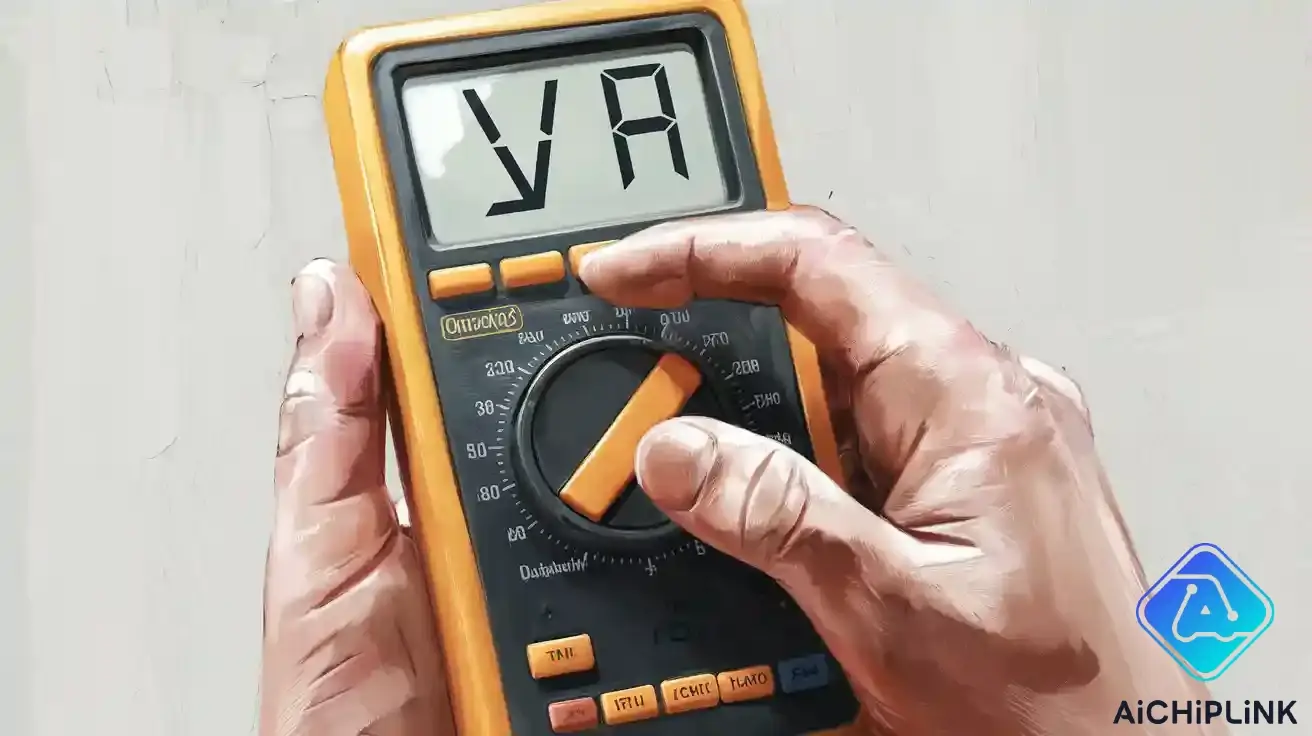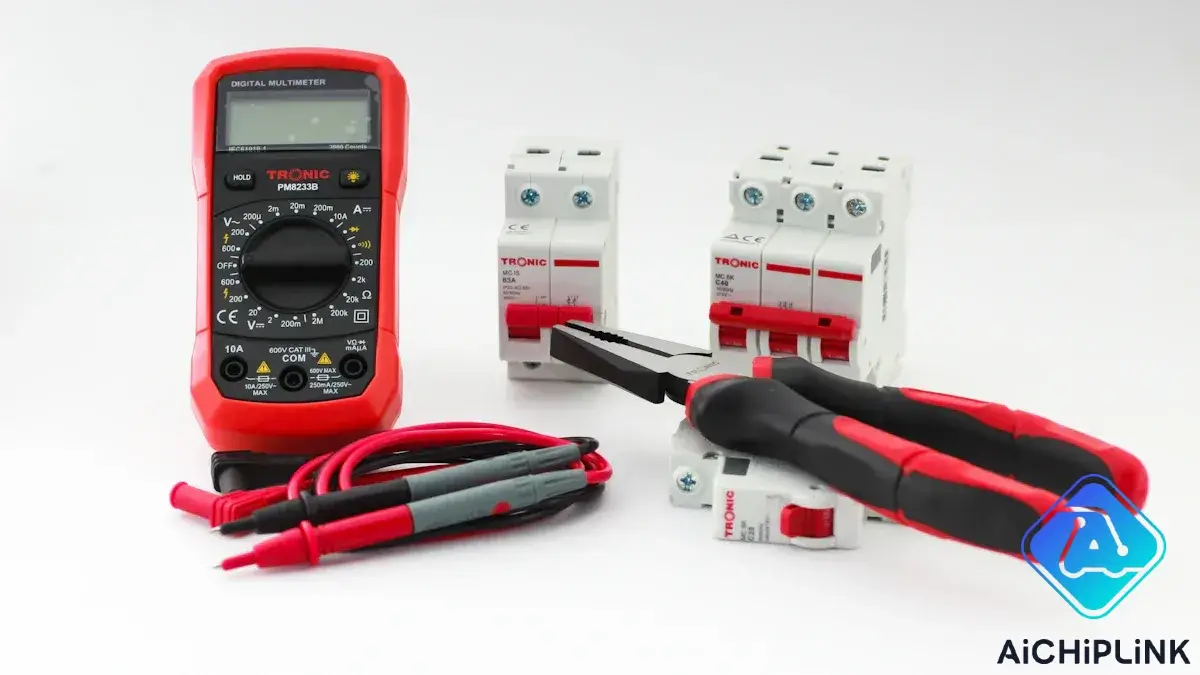
You can see the microfarad symbol on your multimeter as μF, uF, or MFD. This symbol lets you measure capacitance in microfarads. Look by the dial or screen to find these marks. When you pick the microfarad setting, you can read the measurement right. Knowing where to find and read the microfarad measurement helps you test capacitance the right way.
Key Takeaways
- Find the microfarad symbol (μF, uF, or MFD) on your multimeter dial or screen to measure capacitance the right way. - Always turn off the power first, safely discharge capacitors, and take them out of the circuit before you measure. This helps you stay safe and get correct results. - Follow each step on your multimeter, wait for the number to show, and know that 'OL' means the capacitor is too big or broken.
Microfarad Symbol
Symbol for Microfarads
When you measure capacitance with a multimeter, you need to know the symbol for microfarads. Different companies use different ways to show this symbol. You might see μF, uF, or MFD on your multimeter. The Greek letter μ means "micro," which is one millionth. The letter F stands for farads, which is the unit for capacitance. Sometimes, you see uF instead of μF because it is easier to print on screens. MFD is another short way to write it, mostly on older tools. All these symbols mean the same thing. They show you are measuring microfarads.
Tip: Always look for these symbols on your multimeter before you start. This helps you avoid mistakes and keeps your readings correct.
Companies use rules for which symbol to put on their tools. They want you to read and understand the numbers easily. You will also see other symbols, like V for volts, A for amperes, and Ω for ohms. These symbols help you use your digital multimeter for many jobs. You can check voltage, current, resistance, and capacitance.
Multimeter Display Notations
You can find the microfarad symbol in a few places on your multimeter. Most digital multimeters have a dial or switch in the middle. Look for settings marked C or CAP. These stand for capacitance. Near these settings, you will often see the symbol for microfarads, like uF, μF, or MFD. When you turn the dial to capacitance mode, the display at the top will show the microfarad symbol. This tells you the tool is ready to measure capacitance in microfarads.
-
The dial or switch is usually in the center of the multimeter.
-
The display at the top shows the number and the unit, like μF.
-
Some multimeters use C or CAP instead of a special microfarad symbol for capacitance.
-
You might also see other units, like nanofarads (nF), depending on the range.
Note: Always make sure the symbol on the dial matches the one on the display. This helps you measure the right thing.
Companies use these symbols to make things clear and easy to understand. They follow rules so you can use any digital multimeter and read the numbers. This helps you do common jobs, like testing capacitors in electronics or home devices. When you know where to find the microfarad symbol, you can measure capacitance fast and safely.
Measure Capacitance

Measuring Capacitance Safely
Before you measure capacitance, you must be careful. Capacitors can keep energy inside, even when power is off. If you do not follow safety steps, you could get shocked or burned. Sometimes, a capacitor can even explode. Always think every capacitor might still have a charge.
Here are the main safety steps you should follow:
-
Turn off and unplug the device. Make sure the power is off before you start.
-
Discharge the capacitor. Use a resistor (between 5,000 and 20,000 ohms, rated at 5 watts or more) or a special discharge tool. Put it across the capacitor ends for a few seconds. This makes the energy leave safely.
-
Check the voltage. After you discharge, use your multimeter set to DC volts to check the voltage. If it is less than 1 volt, it is safe to touch.
-
Wear protective gear. Put on gloves and safety glasses. This keeps you safe from shocks or flying pieces.
-
Remove the capacitor from the circuit. This helps you get a good reading and stops other parts from messing up the test.
-
Avoid touching the terminals. Do not touch the metal ends of the capacitor or the test leads during testing.
Tip: Never use your multimeter to discharge a capacitor. The multimeter is only for measuring, not for getting rid of stored energy.
If you do not discharge a capacitor, you can get hurt. The table below shows some dangers and why they matter:
| Risk / Safety Concern | Explanation |
|---|---|
| Hazardous energy storage | Capacitors can keep a dangerous charge after power is off. |
| Explosion and burns | High current discharge can cause burns or explosions. |
| Toxic hazards | Some capacitors contain toxic chemicals that can leak if damaged. |
| Residual charge transfer | Charge can move between capacitors, causing unexpected shocks. |
Using a Multimeter
You can use a digital multimeter to measure capacitance. Follow these steps to get the right value in microfarads and stay safe.
Step-by-Step Instructions
-
Turn off all power to the circuit. Check with your multimeter by measuring voltage.
-
Discharge the capacitor using a resistor or discharge tool. Wait a few seconds for the energy to leave.
-
Verify discharge by checking the voltage with your multimeter. The voltage should be less than 1 volt.
-
Remove the capacitor from the circuit. This stops other parts from changing your reading.
-
Set your multimeter to the capacitance meter mode. Look for the symbol that matches microfarads, like μF, uF, or MFD.
-
If your multimeter has REL mode, turn it on with the test leads not connected. This makes sure stray capacitance does not affect your test.
-
Connect the probes to the capacitor ends. For polarized capacitors, match the positive and negative sides.
-
Wait for the reading. The multimeter will charge the capacitor and show the value. Some meters need a few seconds to finish.
-
Read the display. The value will show in microfarads or nanofarads, depending on the size of the capacitor and the multimeter range.
-
If you see "OL" on the screen, the value is too high or the capacitor may be broken. Try a different range or check the capacitor for problems.
Note: Many digital multimeters switch between nanofarads (nF) and microfarads (μF) by themselves. This helps you measure both small and big capacitors without changing anything.
How the Multimeter Calculates Capacitance
A digital multimeter checks capacitance by charging the capacitor with a set current. It measures how fast the voltage goes up across the capacitor. The meter uses the formula IC = C × dV/dt, where IC is the current, C is the capacitance, and dV/dt is how fast the voltage changes. A bigger capacitor charges slower, so the meter can figure out the value by timing how long it takes to reach a certain voltage.
Some multimeters use the time constant method. They put a fixed voltage through a resistor and see how long it takes for the capacitor to reach about 63% of the supply voltage. The meter then divides the time by the resistance to find the capacitance.
Common Errors and Best Practices
When you measure capacitance, you can make mistakes if you skip steps. Here are some common errors and how to avoid them:
-
Measuring capacitors while still in the circuit can give wrong readings. Always take the capacitor out first.
-
Not discharging the capacitor can shock you or break your multimeter.
-
Using the wrong range can give bad results. Pick a range just above what you expect, or let the auto-range do it.
-
Not waiting long enough for the reading can mess up your results. Give the meter a few seconds.
-
Overheating the capacitor during testing can break it. Follow the manufacturer's rules.
Tip: For the best results, check your multimeter every year. If you use it a lot or in tough places, check it more often.
Limitations of a Multimeter Capacitance Meter
A regular multimeter can measure capacitance for most simple jobs. But it cannot find some problems like equivalent series resistance (ESR) or inductance. For very careful work, like in labs or important repairs, use a special LCR meter for more details about the capacitor.
Summary Table: Steps for Measuring Capacitance
| Step | Action | Purpose |
|---|---|---|
| 1 | Turn off power and unplug device | Stops electric shock |
| 2 | Discharge capacitor with resistor/tool | Gets rid of stored energy |
| 3 | Check voltage with multimeter | Makes sure it is safe to touch |
| 4 | Remove capacitor from circuit | Helps you get a correct measurement |
| 5 | Set multimeter to capacitance meter mode | Gets ready for testing |
| 6 | Connect the probes to capacitor terminals | Starts the measurement |
| 7 | Wait for reading and note value | Shows the capacitance in microfarads |
By following these steps, you can measure capacitance safely and correctly with your multimeter. Always use safety steps when using multimeter, and remember that measuring capacitance is an important skill for anyone working with electronics. Try different capacitors to get better and learn how a capacitance meter works.
You have to find the right microfarad symbol on your multimeter. This helps you measure capacitance the right way. It also helps you pick the correct capacitor for your circuit. Try measuring capacitance with many types of capacitors. Always look in your multimeter manual to see what the symbols mean. Practicing often makes you more confident and better at using your multimeter.
FAQ
What does "μF" mean on my multimeter?
"μF" means microfarads. This is a unit for capacitance. Capacitance tells you how much charge a capacitor can hold.
Can I measure all capacitors with my multimeter?
You can test most regular capacitors. Some very big or tiny capacitors might not show the right number. Always look in your multimeter’s manual to see what sizes it can measure.
Why does my multimeter show "OL" when testing a capacitor?
"OL" stands for "over limit." This means your capacitor might be too big for your meter. It could also mean the capacitor is broken. Try using another range or test a different capacitor.

Written by Jack Elliott from AIChipLink.
AIChipLink, one of the fastest-growing global independent electronic components distributors in the world, offers millions of products from thousands of manufacturers, and many of our in-stock parts is available to ship same day.
We mainly source and distribute integrated circuit (IC) products of brands such as Broadcom, Microchip, Texas Instruments, Infineon, NXP, Analog Devices, Qualcomm, Intel, etc., which are widely used in communication & network, telecom, industrial control, new energy and automotive electronics.
Empowered by AI, Linked to the Future. Get started on AIChipLink.com and submit your RFQ online today!




